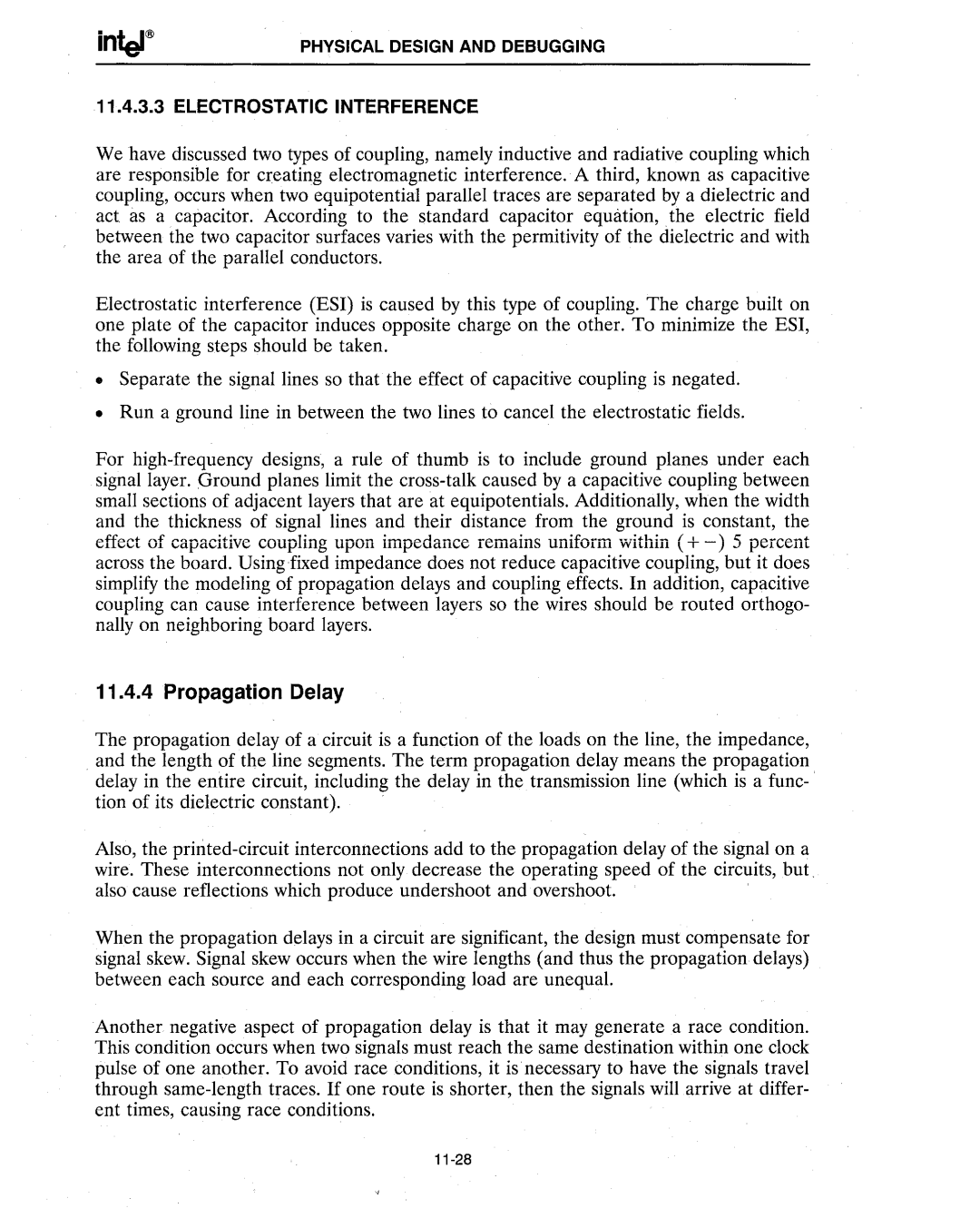
PHYSICAL DESIGN AND DEBUGGING
11.4.3.3 ELECTROSTATIC INTERFERENCE
We have discussed two types of coupling, namely inductive and radiative coupling which are responsible for creating electromagnetic interference. A third, known as capacitive coupling, occurs when two equipotential parallel traces are separated by a dielectric and act as a, capacitor. According to the standard capacitor equation, the electric field between the two capacitor surfaces varies with the permitivity of the dielectric and with the area of the parallel conductors.
Electrostatic interference (ESI) is caused by this type of coupling. The charge built on one plate of the capacitor induces opposite charge on the other. To minimize the ESI, the following steps should be taken.
•Separate the signal lines so that' the effect of capacitive coupling is negated.
•Run a ground line in between the two lines to cancel the electrostatic fields.
For
11.4.4 Propagation Delay
The propagation delay of a circuit is a function of the loads on the line, the impedance,
,and the length of the line segments. The term propagation delay means the propagation delay in the entire circuit, including the delay in the transmission line (which is a func- ' tion of its dielectric constant).
Also, the
also cause reflections which produce undershoot and'overshoot. | . |
When the propagation delays in a circuit are significant, the design must compensate for signal skew. Signal skew occurs when the wire lengths (and thus the propagation delays) between each source and each corresponding load are unequal.
Another negative aspect of propagation delay is that it may generate a race condition. This condition occurs when two signals must reach the same destination within one clock pulse of one another. To avoid race conditions, it is necessary to have the signals travel through
